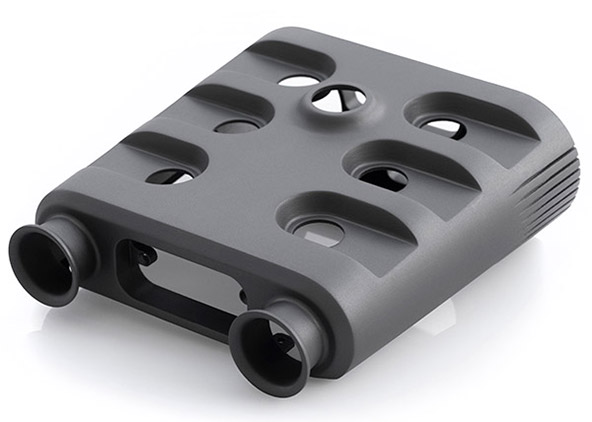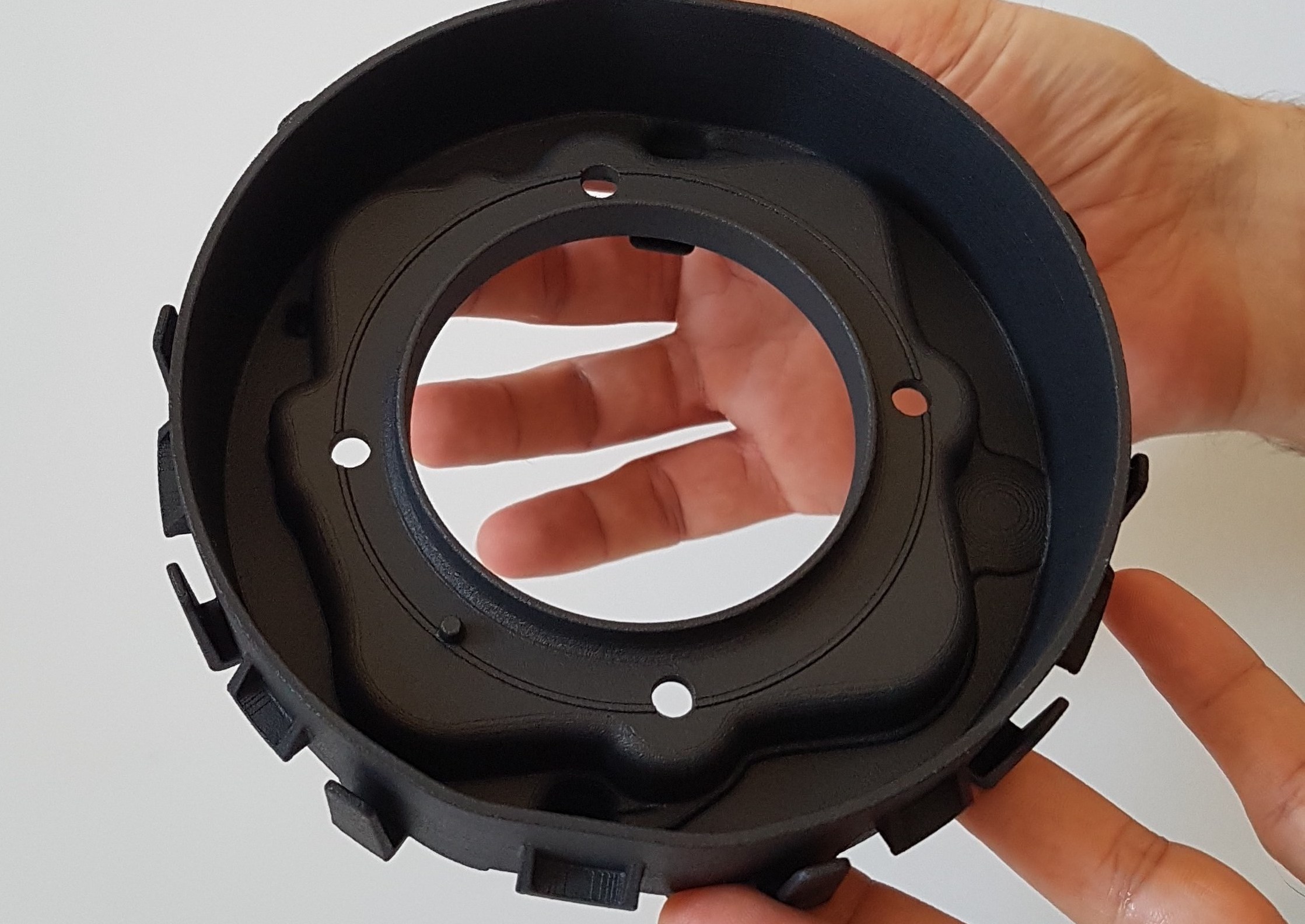3D printing materials and services provider CRP Technology has launched a new polyamide-based carbon fiber filled composite 3D printing material, Windform RS, engineered for production-grade powder bed fusion (PBF) 3D printing.
Windform RS is the tenth material released under CRP’s proprietary Windform TOP-LINE range of composite materials, created and developed by the company specifically for PBF printing technologies.
The new material supposedly possesses “incomparable” mechanical characteristics while offering product designers enhanced functionality, flexibility, and speed during the printing process.
“In the additive manufacturing world Windform is unparalleled,” said Franco Cevolini, CEO and CTO of CRP Technology. “We created a material that combines high tensile strength with high elongation at break and low density: Windform RS in unique of its kind.”

CRP Technology’s Windform TOP-LINE range
Founded in 1970 as Roberto Cevolini & C, CRP was originally focused on producing specialist car components and CNC machining parts for Formula 1 teams. The firm later became known as CRP Meccanica and established CRP Technology as its subsidiary to provide its customers with a 3D printing alternative to its then-current offering.
CRP Technology developed its first Windform 3D printing material in 1996, which was later succeeded by Windform XT in 2005, the first carbon fiber-reinforced composite for SLS 3D printing. The aero-optimized composite brought the performance benefits of motorsport metals from the wind tunnel into a wider range of applications, equipped with enhanced mechanical and thermal properties.
While built on the company’s motorsport heritage, the company’s current range of Windform TOP-LINE composites is also deployed for a variety of other highly demanding prototyping and end-use applications.
For instance, the firm’s Windform FR2 material is a flame retardant glass-fiber-reinforced material, engineered for use within the aerospace and automotive sectors. The material has been used by electric motorcycle manufacturer Energica to produce cell pouch frames for its battery pack prototypes.
Meanwhile, the company’s Windform SP carbon fiber filled polyamide-based composite has been leveraged by safety specialist Joyson Safety Systems to 3D print a functional airbag housing container prototype.
More recently, CRP’s Windform TOP-LINE range has been used to fabricate a series of nanosatellites and PocketQubes for clients in the aerospace sector. The likes of Alba Orbital, Mini-Cubes and its partner firm CRP USA have utilized the thermal and mechanical properties of Windform XT 2.0 to produce a string of pocket satellites and deployers.

The Windform RS
CRP Technology has now added the latest addition to the Windform TOP-LINE portfolio, Windform RS, a polyamide-based carbon fiber filled composite material. Among the new material’s heralded mechanical properties is its capability to resist damage, shock, vibrations, deformations, and high temperatures.
Windform RS’ high resilience and strength properties allow it to withstand shocks at various ranges of temperature, even at sub-zero, having been successfully tested to -40 degrees celsius. The material is also resistant to water and liquid absorption down to one millimeter part thickness and has been rated HB according to the flammability UL 94 test.
“CRP Technology has been always working hard to bring forward customizable PBF 3D printing solutions for any scenario,” said Cevolini. “We’re building upon CRP Technology’s legacy in materials for AM to create new ones at the highest level for our customers’ benefit, and Windform RS proves it: our focus on innovation led to the creation of a composite material with a very high Tensole Strength (85.25 MPa) that has at the same time excellent ductility (Elongation at Break of 9.46%) and low density (1.10 g/cc).
“To date, there is no material upon the 3D market that can compete with Windform RS: the combination of high resistance and high resilience makes Windform RS unique in the AM world.”
According to CRP Technology, Windform RS has been engineered to provide product designers with enhanced functionality, flexibility and speed in developing intricate parts that are resistant not only to high and low temperatures but also to fatigue and shocks. Additionally, the material is designed to offer increased ease of printing during the manufacturing of parts.
“This is a very important property not to underestimate,” added Cevolini. “Many materials on the AM market claim high performance, but their ‘printability’ turns to be difficult during the sintering of the part, thus complications arise leading to bad quality and poor performance.”
However, he stated, such complications do not arise when using Windform RS, with the material maintaining “optimal” ease of printing.
The material is suited to the production of tough and intricate 3D printed PBF parts, as well as robust functional prototypes and heavy-duty end-use applications that need to withstand harsh environments. Thanks to its mechanical properties, Windform RS could be leveraged for custom production, pre-series parts, and mission-critical components within the aerospace, military, motorsports, robotics, automotive, and marine sectors.
“As CRP Technology, we always look toward the future not just for our company, but for those sectors where the demand for high-value and high-performance parts is fast growing,” Cevolini added. “Windform RS is an astounding advancement in engineered materials, offering a unique opportunity with the durability, strength and flexibility needed for a wide range of additive manufacturing applications.”
Subscribe to the 3D Printing Industry newsletter for the latest news in additive manufacturing. You can also stay connected by following us on Twitter and liking us on Facebook.
Looking for a career in additive manufacturing? Visit 3D Printing Jobs for a selection of roles in the industry.
Subscribe to our YouTube channel for the latest 3D printing video shorts, reviews and webinar replays.
Featured image shows a component 3D printed in Windform RS. Photo via CRP Technology.



